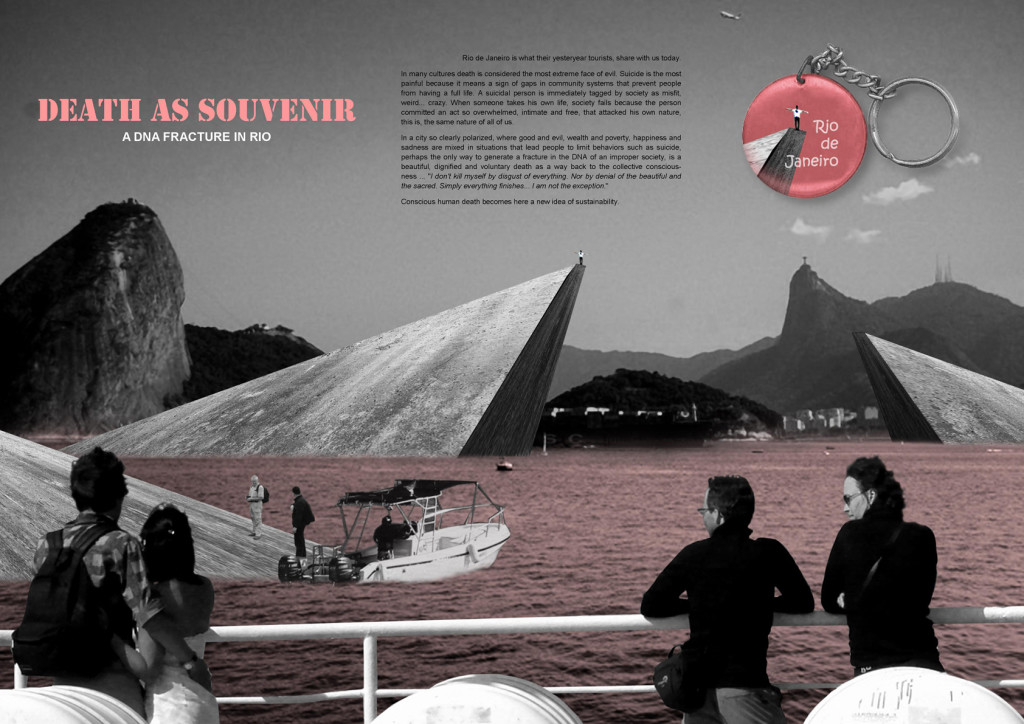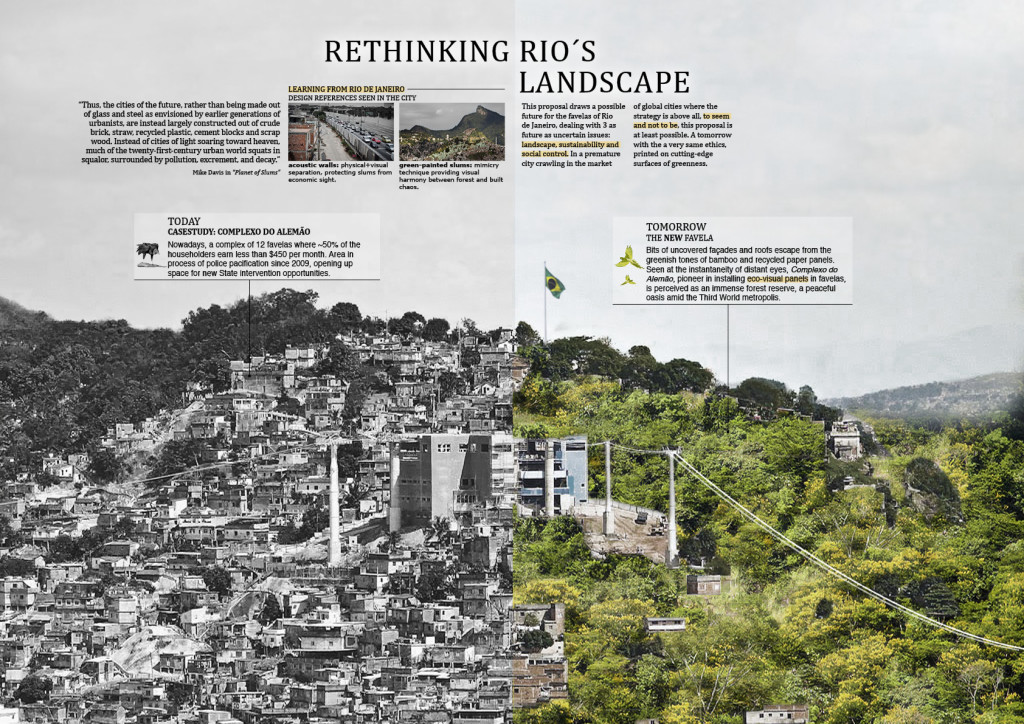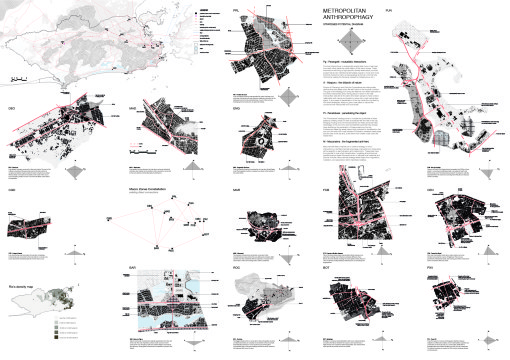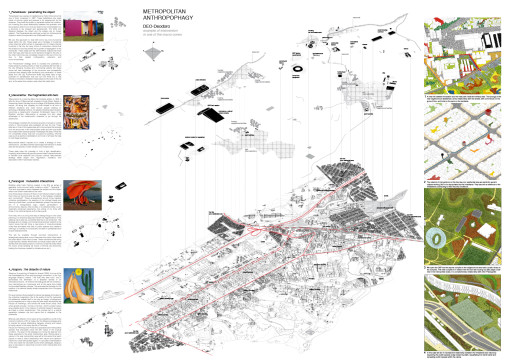Info:
Title: Metropolitan Anthropophagy - Code: 7902aContest: Rio de Janeiro / 2013
By: André Cavendish - Alessandra Monarcha
Views: 9607 Likes: 17
Votes:
Alejandro Zaera-Polo 9 Jeffrey Inaba 7 Jeroen Koolhaas 7 Hernan Diaz Alonso 1 Cristiano Toraldo di Francia 8 Pedro Rivera 96.8
Metropolitan Anthropophagy
In this key moment for Rio, changes are done in a logic of object and representation. Rio’s international visibility leads to a series of iconic projects useful to sell the city to the world rather than really reflect about its intrinsic conditions. All the projects, from the Porto Maravilha, the transports planning, to the pacification politics of the favelas pursue an economical and advertising logic. This logic tries to insert Rio in an economic international scene putting aside the resolution of its deep problems and excluding its population from these changings. Rio needs a serious rethink of its internal dynamics beyond the image. “Manifesto antropofágico” is a manifesto written by Brazilian writer Oswald de Andrade in 1928. He looks to pre-colonial cultures as Brazil’s genuine culture and he states that going through the recovery of cannibals indigenous traditions will engender an inner attitude that freed the minds of Brazilian artists from the cultural references of old Europe, releasing their all-round creative memories. If in arts Brazil succeeded to release himself from external authority the same didn’t happened in the way of thinking city. Metropolitan Anthropophagy M A looks at the actual Rio and assumes that all the tools to make the future Rio are already there. M A ingests the lessons from existing Rio: its formal and informal practices, its urban planning conceptions, the fragmentation of its territory, the dynamics of people’s displacements, the practice of the streets and the public spaces, its tropical condition, etc. M A assimilates the knowledge acquired by the reflections about contemporary metropolis to vomit it into a Brazilian practice. M A states that Rio cannot continue to expand. M A affirms that the future sustainable Rio has to build himself inside the existing urban fabric. M A proposes an open dialogue between diverse urban models rather than imposing a specific lifestyle valorising local networks and popular cultures. M A establishes a new relationship towards nature as a counterpoint to nature perceived as a background. M A assumes the favela as part of the city and interventions are to be strategically placed so that it shall be used by all inhabitants crossing the boundaries between formal and informal city. M A assumes the complex political and economical context and believes that changes can come from punctual interventions rather than big urban operations. M A advances 4 strategies to rethink Rio from the inside: Parangolé/ mutualistic interactions, Abaporu/ didatic of nature, Penetraveis/ penetrating the object, Macunaima/ the fragmented anti-hero. M A identifies 13 possible macro-zones where strategies can be applied. They were chosen due to their high level of connection in a metropolitan scale, their representativeness of the diversity of urban fabrics and contexts, their revelation of the big fractures created by infrastructure in the local scale.
Info:
Title: Metropolitan Anthropophagy
Time: 4 agosto 2013
Category: Rio de Janeiro
Views: 9607 Likes: 17
Tags: -








